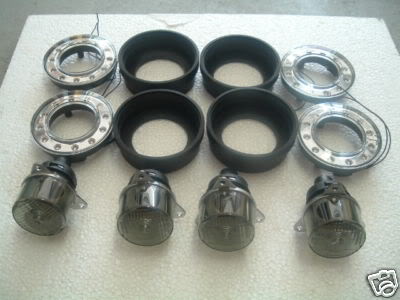Hi im new to this forum and a novice when it comes to led's resistors etc.
Im trying to make a simple cost effective led rear light system for my car, The issue i have is i cant just wire up some led's and work as my car produces 14v ad the leds would last 2 mins and blow.
So i need a system that uses resistors to keep the volts at a constant 12v to avoid lowing led's.
this is a kit supplied in italy and is over £300 which for the cost of led's and parts is OTT and the system only uses outer leds and the center lights are ordinary bulbs.


Im after making a complete led light set which hasnt been done yet, If i can get the basics of were to put the resistors or what ever i need to stop my led's burning out would be muchly appreciated.
P.s im pretty handy with a slodering iron
Any help would be great
Thankyou
Im trying to make a simple cost effective led rear light system for my car, The issue i have is i cant just wire up some led's and work as my car produces 14v ad the leds would last 2 mins and blow.
So i need a system that uses resistors to keep the volts at a constant 12v to avoid lowing led's.
this is a kit supplied in italy and is over £300 which for the cost of led's and parts is OTT and the system only uses outer leds and the center lights are ordinary bulbs.


Im after making a complete led light set which hasnt been done yet, If i can get the basics of were to put the resistors or what ever i need to stop my led's burning out would be muchly appreciated.
P.s im pretty handy with a slodering iron
Any help would be great
Thankyou



